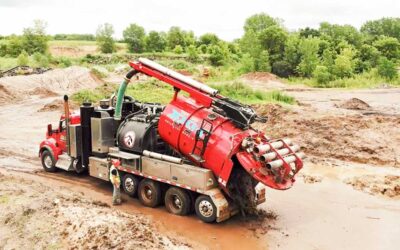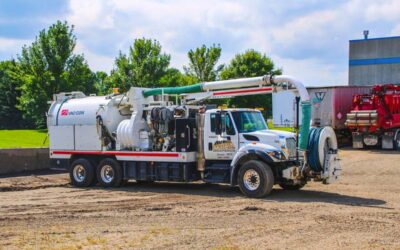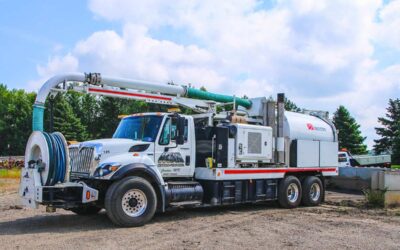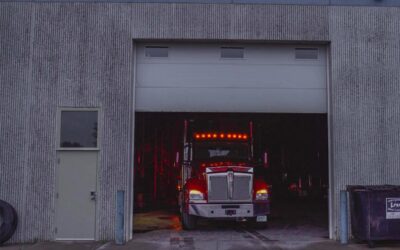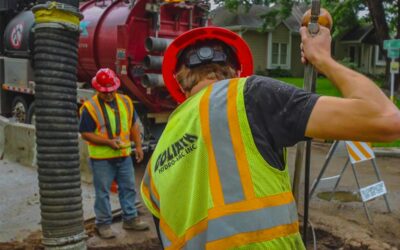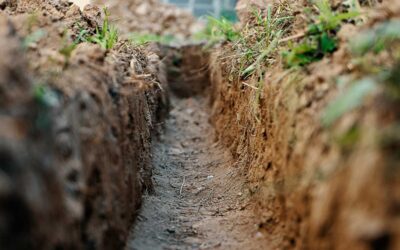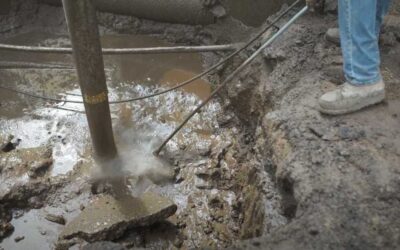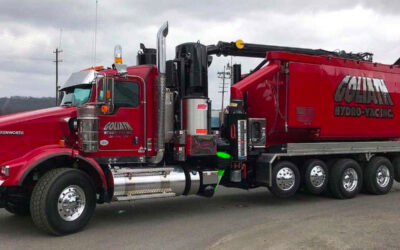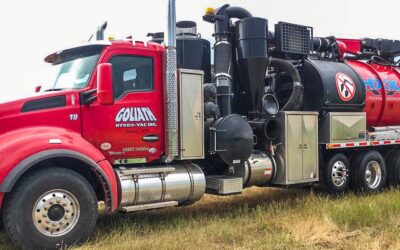Vacuum Excavator for Horizontal Drilling
Vacuum Excavation for Horizontal & Vertical Drilling
Picture this: a drilling technique that doesn’t rely on the roar of heavy machinery or the mess of traditional drilling fluids. Vacuum drilling is the innovation that brings this quiet and clean vision to life.
But what exactly is vacuum drilling? In a nutshell, it’s a powerful system that leverages the force of a vacuum to remove soil and debris from the ground with remarkable precision. Unlike conventional methods that turn construction sites into noisy and messy battlegrounds, vacuum drilling operates with a hushed efficiency.
In this article, we will discuss the fundamentals of vacuum drilling, uncovering its significance and exploring its wide-ranging applications.
Benefits of Vacuum Drilling
When it comes to excavation and drilling, vacuum drilling offers a multitude of advantages that have earned it a place at the forefront of modern construction and environmental remediation practices. Here are a few benefits of vacuum drilling:
Environmental Impact: Traditional drilling methods often involve the use of drilling fluids, which can contaminate soil and water sources. In contrast, vacuum drilling operates without the need for such fluids, greatly reducing the risk of soil and water contamination. This makes it an ideal choice for projects in sensitive ecosystems and urban areas where environmental protection is paramount.
Safety Advantages: The operation of vacuum drilling is significantly quieter than traditional drilling methods, reducing noise pollution in residential areas and enhancing the working environment for operators. Moreover, the absence of heavy equipment and drilling fluids minimizes the potential for accidents, making vacuum drilling a safer option for both workers and the surrounding community.
Cost-Effectiveness: The efficiency of vacuum drilling translates into shorter project timelines and reduced labor costs. Additionally, the decreased need for site remediation due to minimal environmental impact can result in substantial long-term savings. This makes vacuum drilling a financially sound choice for a wide range of projects.
Precision and Accuracy: Vacuum drilling offers a level of accuracy that is hard to match with conventional methods. Its ability to create precisely sized and shaped holes with minimal disruption to the surrounding area is a boon for utility installations, soil sampling, and geotechnical investigations. This precision ensures that projects are executed with the utmost efficiency and that there is minimal disturbance to existing infrastructure.
Applications of Vacuum Drilling
Vacuum drilling, with its impressive array of benefits, has found its way into various sectors, revolutionizing the way we approach drilling and excavation. Here are some of its primary applications:
Construction Industry: In the world of construction, time is money, and precision is paramount. Vacuum drilling has emerged as a game-changer in this industry. Its ability to create precise, clean holes with minimal disturbance to the surrounding area is invaluable. Whether it’s for anchoring structures, installing posts, or creating openings for utilities, Vacuum drilling ensures that construction projects are executed efficiently and accurately.
Foundation Piling: The stability and integrity of any structure begin with its foundation. Vacuum drilling plays a crucial role in foundation piling, offering a non-invasive method for creating holes to support building foundations. This application is particularly valuable in urban areas where space is limited, and minimal disruption to the surrounding environment is essential. Vacuum drilling can create foundation piles with precision, ensuring the structural integrity of buildings and infrastructure.
Utility Installation: The installation of utilities, such as gas, water, and electrical lines, requires precision to avoid costly damage to existing infrastructure and to ensure the safety of workers and the community. Vacuum drilling is the ideal choice for utility installation projects. It can create precise holes for utility placement without the need for extensive excavation. This minimizes disruption to roadways, sidewalks, and landscapes while allowing for efficient utility installation and maintenance.
Equipment and Tools
When it comes to vacuum drilling, the right equipment and tools are essential to ensure efficient and safe operations. Here are the top three components that make vacuum drilling a reality:
1 – Vacuum Excavators
At the heart of vacuum drilling is the vacuum excavator. This specialized machine is designed to create a powerful vacuum, capable of removing soil and debris from the drilling hole. Vacuum excavators come in various sizes and configurations, from compact units mounted on trucks to larger, trailer-mounted versions. The choice of vacuum excavator depends on the scale and scope of the drilling project.
Here’s a few factors to consider:
Types and Variations: Vacuum excavators are not one-size-fits-all machines. They come in different types and variations to suit specific needs. Some are designed for urban environments, where compactness and maneuverability are crucial. Others are built for heavy-duty industrial applications, capable of handling larger volumes of material. Variations also include options for wet or dry excavation, depending on the nature of the drilling project and the materials involved.
Features and Specifications: Modern vacuum excavators are equipped with a range of features and specifications that enhance their efficiency and safety. These may include high-powered vacuum pumps, advanced filtration systems, and onboard water tanks for wet excavation. Additionally, many units are designed with user-friendly controls and ergonomic features to improve operator comfort and productivity.
2 – Drill Heads and Nozzles
The drill head and nozzles are critical components of the vacuum drilling system. These attachments are responsible for creating the initial hole and directing the vacuum suction. Various drill head and nozzle designs are available to accommodate different drilling needs, including soil conditions, hole sizes, and depths. Some are optimized for precision drilling, while others are designed for faster material removal.
3 – Safety Gear and Accessories
Safety is a top priority in vacuum drilling operations. To protect operators and maintain a safe work environment, specialized safety gear and accessories are often used. This may include protective clothing, gloves, and eyewear to shield against debris. Additionally, warning signs and barricades are employed to ensure the safety of bystanders and prevent unauthorized access to the drilling area.
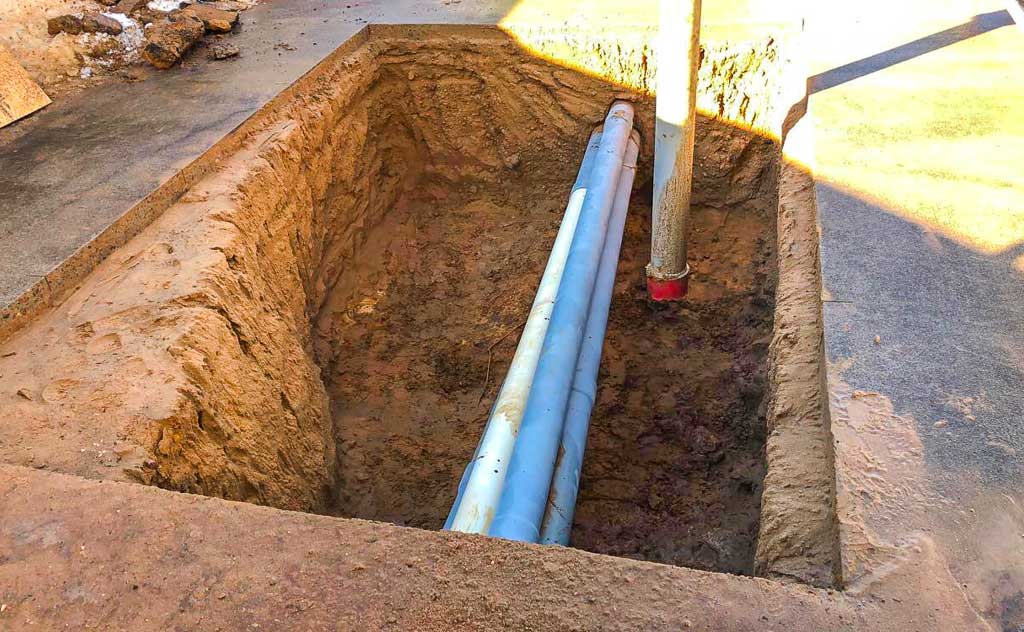
Vacuum Drilling Techniques
Vacuum drilling offers a versatile approach to excavation and drilling, and it can be adapted to various scenarios and project requirements. Two primary techniques dominate the field: horizontal vacuum drilling and vertical vacuum drilling. Here’s an exploration of both techniques and the key steps involved in each process:
Horizontal Vacuum Drilling
This technique is used to create precise, horizontal holes beneath the ground’s surface. It is particularly useful for tasks like installing utility lines, conduits, or pipelines without the need for extensive trenching or disruption. This method allows for minimal surface disturbance while achieving accurate drilling results.
Key Steps in the Process:
1 – Planning and Marking: The process begins with thorough planning and marking of the drilling path. This step involves identifying the precise location where the horizontal hole needs to be created.
Positioning the Equipment: The vacuum excavator, equipped with the appropriate drill head and nozzle, is positioned at the starting point of the drilling path.
2 – Creating the Hole: The drill head is inserted into the ground, and the vacuum system is activated to remove soil and debris from the hole while maintaining its horizontal alignment.
3 – Monitoring and Control: Operators closely monitor the drilling process, ensuring that the desired depth and trajectory are maintained.
4 – Extraction and Finalizing: Once the hole is complete, the equipment is withdrawn, and the hole is ready for utility installation or other purposes
Vertical Vacuum Drilling
On the other hand, this technique is employed to create precise vertical holes in the ground. It is often used in applications such as geotechnical drilling, soil sampling, or foundation piling. It ensures that holes are drilled with utmost accuracy and minimal disruption to the surrounding environment.
Key Steps in the Process:
1 – Site Preparation: Before drilling begins, the site is prepared, and the drilling location is marked for accuracy.
2 – Equipment Setup: The vacuum excavator is positioned over the drilling location, ensuring that it is aligned vertically.
3 – Commencing Drilling: The drill head is lowered into the ground, and the vacuum system is activated to remove soil and debris as the hole is gradually created.
4 – Monitoring and Adjustments: Operators closely monitor the drilling process, making any necessary adjustments to maintain vertical alignment.
5 – Extraction and Finalization: Once the desired depth is reached, the equipment is removed, and the vertical hole is ready for its intended purpose.
Safety Protocols
Safety is paramount in any drilling and excavation operation, and vacuum drilling is no exception. In order to protect operators, prevent utility damage, and safely handle hazardous materials during vacuum drilling projects, here are the safety protocols that must be adhered to:
1 – Ensuring Operator Safety
Training and Certification: Operators must undergo comprehensive training and hold the necessary certifications to operate vacuum drilling equipment safely. This includes understanding the equipment’s controls, maintenance procedures, and emergency protocols.
Protective Gear: Operators should wear appropriate personal protective equipment (PPE), including helmets, safety goggles, gloves, and high-visibility clothing, to safeguard against flying debris, falls, and other potential hazards.
Equipment Inspection: Prior to each operation, equipment must undergo a thorough inspection to ensure that all components are in proper working condition. Any defects or malfunctions must be addressed promptly.
Emergency Procedures: Operators should be well-versed in emergency response procedures, including shutting down equipment, evacuating the area in case of hazardous materials, and administering first aid if necessary.
2 – Preventing Utility Damage
Utility Location Services: Before commencing any drilling project, it is imperative to perform utility location services. This includes contacting utility companies to identify and mark the location of buried utilities, such as gas, water, and electrical lines.
Depth Control: Operators must exercise precise control over drilling depth to avoid accidentally damaging underground utilities. This is particularly critical in urban areas where utilities are densely packed.
Communication: Effective communication among all team members is essential to prevent utility damage. Operators, supervisors, and utility locators must work together to ensure the safety of underground infrastructure.
3 – Dealing with Hazardous Materials
Hazardous Materials Assessment: Before drilling in any area, a thorough assessment should be conducted to identify potential hazardous materials in the soil, such as contaminants or toxic substances. Proper permits and regulatory compliance are crucial when dealing with such materials.
Material Handling: If hazardous materials are encountered during drilling, operators must follow established procedures for containment, removal, and disposal. This may involve specialized equipment and the use of personal protective gear designed for hazardous material handling.
Contingency Planning: Projects involving hazardous materials should have well-defined contingency plans in case of spills or unexpected releases. These plans should include steps for evacuating personnel, notifying relevant authorities, and containing the hazard.
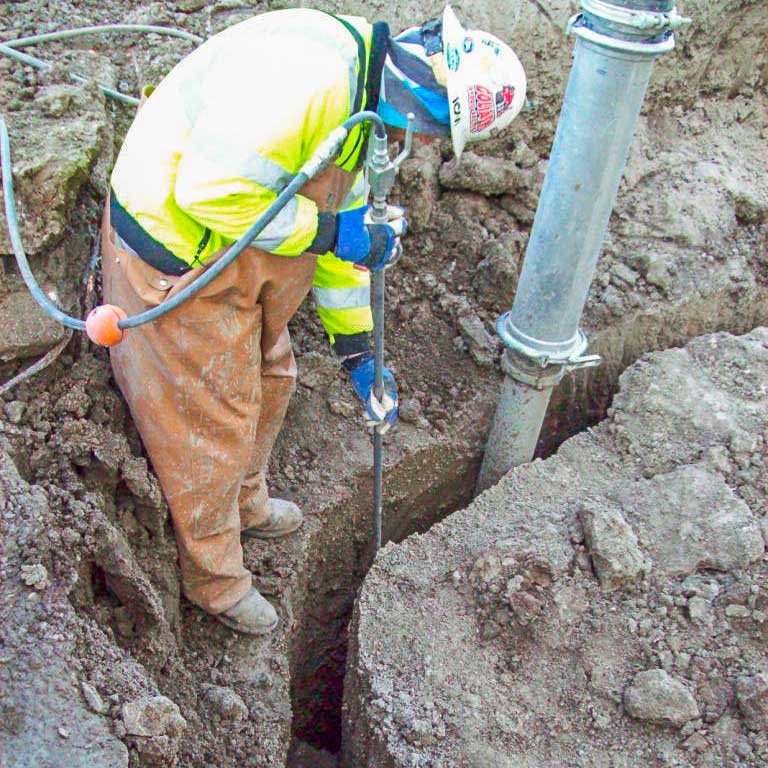
Environmental Considerations
Vacuum drilling, with its precision and minimal environmental impact, is an eco-friendly choice in the realm of drilling and excavation. Here’s how vacuum drilling is an environmentally conscious method:
Minimizing Soil Disruption: Traditional drilling methods often involve extensive excavation, leading to soil erosion and habitat destruction. Vacuum drilling creates clean, precise holes without the need for large-scale excavation. In sensitive environments, such as wetlands or urban green spaces, preserving the integrity of the soil and surrounding ecosystems is crucial. Vacuum drilling minimizes disturbance to these fragile environments, allowing for construction and utility projects while preserving biodiversity.
Reducing Carbon Footprint: Vacuum drilling equipment is designed for efficiency, with advanced filtration systems and powerful vacuum pumps. This efficiency translates into reduced fuel consumption and lower greenhouse gas emissions compared to heavy machinery used in traditional drilling methods. Shorter project timelines, often achieved through vacuum drilling’s precision and efficiency, not only save time but also reduce the overall energy consumption associated with construction and drilling activities.
Mitigating Soil Contamination: In projects involving potentially contaminated soils, such as brownfield redevelopment or environmental remediation, vacuum drilling helps prevent the spread of contaminants to unaffected areas. When conducting soil sampling for environmental assessments or research, vacuum drilling allows for the collection of uncontaminated soil samples without the risk of cross-contamination from drilling fluids or equipment. In soil and groundwater remediation projects, vacuum drilling can be used to remove contaminated materials safely, aiding in the cleanup process.
Conclusion – Vacuum Excavation for Horizontal & Vertical Drilling
The adaptability and versatility of vacuum drilling make it a vital asset in urban development, infrastructure projects, and environmental initiatives. This method is setting new standards for precision, safety, and environmental stewardship.
Goliath Hydrovac Inc. has been in the excavation industry for over 20 years. We are a trusted provider of hydrovac services throughout the midwest. Goliath Hydrovac Inc. is committed to providing exceptional excavation services tailored to your specific needs.
Contact us at 612-727-3444 today to learn more about how Goliath’s hydrovac excavation services can benefit your operation.
RELATED POSTS
Benefits of Industrial Cleaning
Industrial Cleaning Benefits Keeping a clean and secure environment goes beyond mere appearance; it's a vital...
What are the Key Components of Industrial Cleaning
Key Components of Industrial Cleaning Industrial cleaning refers to the specialized process of cleaning...
The Basics of Industrial Cleaning
The Basics of Industrial Cleaning Industrial cleaning is essential for the smooth and efficient operation of...
What is Industrial Cleaning
What is Industrial Cleaning? The importance of maintaining clean and sanitary manufacturing facilities cannot...
Trenching Safety
Trenching Safety Trenching is the process of digging deep and narrow excavations in the ground. The primary...
Types of Trench Excavation
Types of Trench Excavation Trenches are an essential aspect of excavation and construction projects, serving...
What is Trenching?
What is Trenching? Imagine for a moment the complex web of utilities that run beneath the surfaces of our...
Hydro Excavation Safety Tips and Procedures
Hydro Excavation Safety Tips Hydro excavation, a cutting-edge method of digging, harnesses the power of water...
Hydrovac Truck Winter Maintenance Tips: Keeping Your Fleet Ready for Cold Weather
Hydrovac Truck Winter Maintenance Tips Hydro-excavation trucks, also known as hydrovac trucks, utilize...
Monthly Preventive Maintenance for Vacuum Trucks
Monthly Service for Vacuum Truck Maintenance Vacuum trucks play a vital role in efficiently collecting and...

